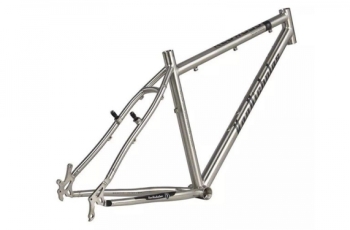What are titanium tubes used for?
We need to know the characteristics of titanium before using it. First, titanium has low density, which is half of stainless steel, so the weight of titanium is only half of stainless steel with the same volume, and it greatly reduces the weight. Second, titanium has better corrosion resistance to salt water (sea water) than copper. The titanium alloy materials such as Ti-3Al-2.5V, Ti-6Al-4V have the above advantages, and they also have higher strength and hardness. Titanium tube is a metal material with high strength, hardness and corrosion resistance, which is widely used in aerospace, chemical corrosion prevention, health care, marine engineering equipment, refrigeration and heat transfer, bicycle and wheelchair frames, etc. With the development of science and technology, titanium tube is used more and more widely in many fields. 1. Aerospace field Titanium tube used in aerospace field must have high strength and hardness, good creep resistance, high tensile strength at high temperature, and also certain corrosion resistance. The main titanium alloy material used is Grade 9(Ti-3Al-2.5V). AMS 4943, AMS4944, AMS4945 standards are implemented. 2. Chemical corrosion prevention field Titanium tube can be used in acid and alkali environment, but not usable in sulfuric and nitric acid environment. Chlor-alkali industry specializes in producing chlorine gas and caustic soda by electrolyzing salt aqueous solution. As the earliest, chemical industry that uses titanium, it has a history of more than one hundred years. The main titanium equipment used in chlor-alkali production is metal anode electrolytic cell, ion-film electrolytic cell, tubular wet chlorine cooler, refined brine preheater, dechlorination tower, chlor-alkali cooling scrubber, vacuum dechlorination pump and valve, etc. Titanium tube can be used in the temperature of -50℃~+250℃. but cannot be used in higher temperature and extremely cold environment. Commercial pure titanium is the main material used. 3. Health care field Since titanium tube is harmless to human…
More
